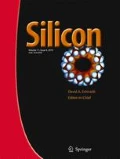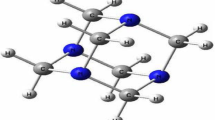Abstract
The present work investigates corrosion behaviour of aluminium alloy in 3.5 % sodium chloride medium at 28 °C in the absence and presence of 0.5, 1.0, 1.5 and 2.0 % g/v concentrations of zinc gluconate using gravimetric and electrochemical techniques. The aluminium alloy was cut to corrosion coupons, and immersed into 3.5 % sodium chloride solution containing different inhibitor concentrations (0.5, 1.0, 1.5 and 2.0 % g/v) within a period of twenty-eight days. The surface morphology of the metal was examined by high resolution scanning electron microscopy equipped with energy dispersive spectroscopy (HR-SEM/EDS). From the results, it was found that the adsorption of zinc gluconate reduced aluminium alloy corrosion in the sodium chloride medium. Experimental results also showed that inhibition efficiency increased with an increase in zinc gluconate concentration. Furthermore, potentiodynamic polarization results revealed decrease in corrosion rates (CR), corrosion current densities (Icorr), and increasing corrosion resistance (Rp) in the presence of zinc gluconate in 3.5 % NaCl solution. Tafel polarization analyses indicated that zinc gluconate is a mixed type inhibitor. The adsorption of zinc gluconate on the aluminium alloy surface followed Langmuir adsorption isotherm.
Similar content being viewed by others
References
Rambau TG, Popoola API, Loto CA (2013). Int J Electrochem Sci 8:5515
Candan S, Biligic E (2004). Mater Lett 58:2787
Bakkar A, Neubert V (2007). Corrosion Sci 49:1110
Ajayi OO, Omotosho OA, Ajanaku KO, Olawore BO (2011). Environ Res J 4:163
Kumpawat V, Garg U, Tak RK (2009). J Ind Council Chem 1:82
Rosliza R, Nora’aini A, Nik WBW (2010). J Appl Electrochem 40:833
Abdulwahab M, Madugu IA, Yaro SA, Popoola API (2012). Silicon 4:137
Al-Turkustani AM, Al-Solmi MM (2011). J Asian Sci Res 1:346
Halambek J, Berkovic K, Vorkapic-Furac J (2010). Corrosion Sci 52:3978
Rajasekar A, Ting Y-P (2011). Ind Eng Chem Res (ACS) 4:2040
Praveen BM, Arthoba TVY, Naik YA, Prashantha K (2007). Surf Coating Technol 201:5836
Kim DK, Muralidharan S, Ha TH, Bae JH, Ha YC, Lee HG (2006). Electrochim Acta 51:5259
Subasria R, Shinoharaa T, Morib K (2005). Sci Technol Adv Mater 6:501
Cecchetto L, Delabouglise D, Petit P (2007). Electrochim Acta 52:3485
Fang HC, Chen KH, Zhang Z, Zhu C (2008). Trans Nonferr Metals Soc China 18:28
Li Z, Xiong B, Zhang Y, Zhu B, Wang F, Liu H (2008). Mater Charact 494:278
Risanti DD, Yin M, Rivera PEJ, Vau der Zwang S (2009). Mater Sci Eng 523:99
Mohammed RA, Abdulwahab M, Madugu IA, Gaminana JO, Asuke F (2013). J Mater Environ Sci 1:93
Singh A, Quraishi MA (2012). Res J Recent Sci 1:57
Kumari PD, Nayak J, Shetty N (2011). J Mater Environ Sci 4:387
Abdulwahab M, Kassim A, Bello KA, Gaminana JO (2012). Adv Mater Res 367:319
Umoren SA, Ebenso EE (2008). Pigment Resin Technol 37:173
Umoren SA, Obot IB, Ebenso EE, Okafor PC, Ogbode O, Oguzie EE (2009). Anti-corrosion Methods Mater 53:277
Abiola OK, Otaigbe JOE, Kio OJ (2009). Corrosion Sci 51:1879
Mahdavian M, Naderi R (2011). Corrosion Sci 53:1194
Sanni O, Loto CA, Popoola API (2013). Res Chem Intermed J. doi:10.1007/s11164-013-1181-5
Raja PB (2009). Pigment Resin Technol 38:33
Gomma GK, Wahdan MH (1994). Mater Chem Phys 2:142
Singh AK, Quraishi MA (2010). J Mater Environ Sci 1:101
Mohammad I, Abdulrahman AS, Hussain MS (2011). Int J Eng Sci Technol 3:1742
Author information
Authors and Affiliations
Corresponding author
Rights and permissions
About this article
Cite this article
Sanni, O., Loto, C.A. & Popoola, A.P.I. Inhibitive Behaviour of Zinc Gluconate on Aluminium Alloy in 3.5 % Nacl Solution. Silicon 8, 195–200 (2016). https://doi.org/10.1007/s12633-014-9180-8
Received:
Accepted:
Published:
Issue Date:
DOI: https://doi.org/10.1007/s12633-014-9180-8



